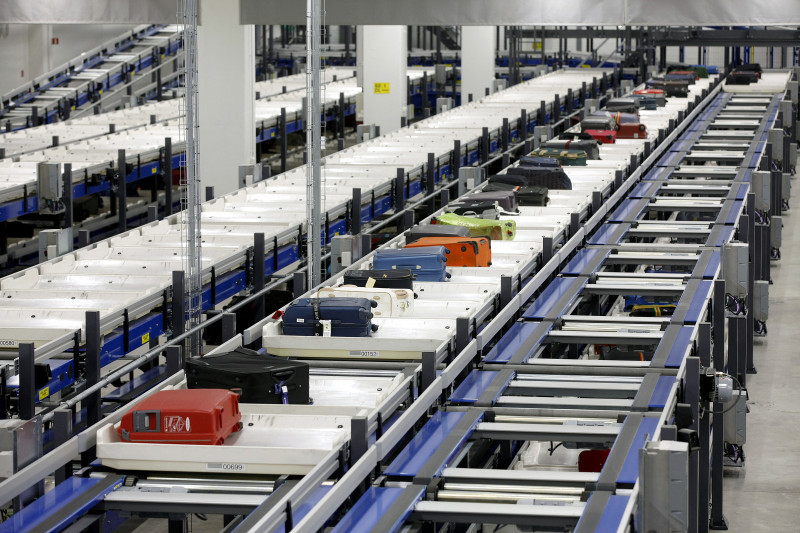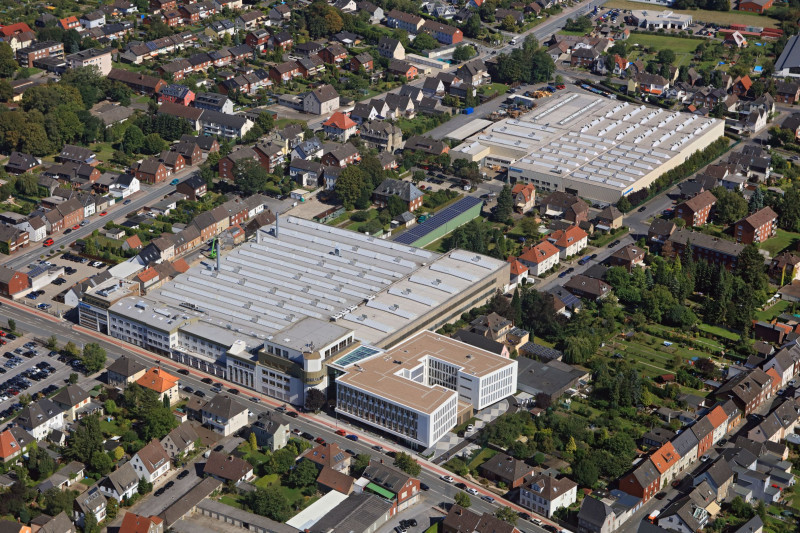01.02.2021
BEUMER Group implements holistic PLM concept based on SAP S/4HANA
With its new PLM landscape based on SAP S/4HANA, the Beumer Group is strengthening its global cooperation in the engineering sector.
PLM processes were previously isolated solutions and often not integrated at the transition between engineering and logistics. Now they are based on a uniform data model. This means that they also include subsequent logistics control processes across a global production network. In the project with BDF EXPERTS, Beumer laid the foundation for an intelligent customer order structure with SAP PLM. This is used to set up customer systems digitally as a backbone with a uniform database. This enables Beumer to optimize its processes from engineering to service and address other strategic PLM topics.
In July 2020, the new Harvey Milk Terminal 1 at San Francisco Airport launched the USA's first container-based baggage handling system. The CrisBag conveyor system is a complex design in which both the system and the individual machine components are from the BEUMER Group. As a machine factory and plant manufacturer in one, the globally active company with headquarters in Beckum, Germany, must therefore break down its internal Product Lifecycle Management (PLM) into individual components and at the same time describe its complex plant business.

Engineering from different locations in a global structure
Since the projects are becoming more and more complex and the business of the Beumer Group as a whole is also growing strongly, the company decided some time ago to switch from the previous ERP system to SAP S/4HANA. Beumer started with product lifecycle management in the engineering area by introducing SAP PLM. With this solution, Beumer can represent machines (components) with many variants on the one hand, and on the other hand it can map its processes in plant engineering and the cooperation with third-party suppliers. Thus, engineering is guaranteed from different locations in a global structure.
Beumer took BDF EXPERTS on board as project partner and process consultant. "In a project of this size, we had to have the new SAP products adapted to our individual requirements," explains Michael Brehe, Head of PLM at the Beumer Group. "That's why we looked for a partner with the necessary PLM background and proven consulting expertise". With the "SAP Product and Proccess Governance" (SAP PPG by BDF), BDF also contributed an SAP-certified add-on with which customer-specific orders can be efficiently processed digitally. With this add-on, customer-specific orders can be efficiently processed digitally. The use of a fully integrated product structure with multiple views and the automated derivation of bills of materials and orders makes a significant contribution to this.
All CAD systems lead to the same PLM data model
The Beumer Group serves various industries and works for them with various CAD systems: AutoCAD, SolidEdge for 3D design, Navisworks and ePlan. The aim of the PLM project was to find a common data model for these CAD systems and the subsequent processes, which would then be integrated into SAP. Beumer introduced SAP's Engineering Control Center (ECTR) to integrate and manage the CAD documents. In this context, BDF created a data model for the engineering data based on SAP's product structure data model.
This SAP solution enables design and production-specific information such as product structures (bills of material), process structures (routings), and factory layouts to be combined in an integrated model. With the SAP PPG, Beumer created an integration of the CAD systems with the product structure. All CAD systems are brought together in an integrated PLM data model. The CAD landscape and the associated processes are no longer isolated solutions, instead they form a uniform digital back bone. On this basis, Beumer can use SAP PLM to describe its products holistically (mechanical, electrical, and logistics view).

The eBOM structure therefore reflects the different variants of the individual components. In reality, each customer system is of course highly individual. For large projects such as airport baggage systems, mail distribution centres or cement plants, the individual Beumer machines are assembled in certain variants, electrically wired and equipped with control units (switch cabinets). For this purpose, the completely prepared order-neutral product structures, which represent the individual Beumer machines, are digitally transferred into another order-specific data model of the product structure (technical order structure). The generic eBOM is used to create various production, assembly or installation bills of material for the individual order, depending on the customer's system.

At Beumer, this technical order structure is called "customer plant structure". All other processes in the SAP system are controlled via this structure: the procurement of purchased parts, the production of in-house manufactured parts, the triggering and coordination of subcontracting or subcontractor processes, product or project costing at all the necessary levels of detail, and integration into project management, i.e. triggering individual requirements in accordance with central project scheduling depending on the individual work packages, and assigning them to the correct account assignment objects.
At the end of June 2020, SAP went live for the PLM processes at Beumer. This lays the foundation for the PLM area, on which the logistical follow-up processes can be built from 2021. The corona crisis made communication at the start of the project more difficult; the 800 users at 14 engineering locations around the world were trained exclusively online. Nevertheless, the project remained on schedule.
The new approach enables the machine and plant manufacturer to have engineering departments working globally across the entire group of companies with a uniform data structure - a digital backbone - instead of with individual systems as was previously the case. To complete the 'Product Lifecycle Management', the project team around Michael Brehe also focuses on the time after commissioning, i.e. the actual part of the life cycle of the customer's plant. For this reason, a complete generation of the service object structures was set up using SAP Service Management. In this process, all maintenance-relevant objects or individual parts of a system are managed using so-called equipment structures. Here it is possible to plan, monitor and document maintenance intervals, repairs, machine runtimes and the replacement of wearing parts. This data can be used to establish early warning functions, carry out statistical evaluations, and optimally manage the operation of a plant as a whole.
About the BEUMER Group
The BEUMER Group is a leading international manufacturer of intralogistics systems for conveying, loading, palletizing, packaging, sorting and distribution. With 4,500 employees, Beumer generates an annual turnover of approximately 950 million euros. The company was founded in 1935, is independent in the 3rd generation and is privately owned.





